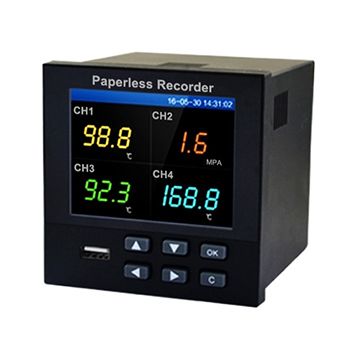Paperless Recorder: Advantages and Functions
The paperless recorder records the collected data/operation data in the internal storage system of the instrument based on time, without consuming any common recording facilities, such as paper, pen and ink. The stored data recorded in the instrument is displayed on the LCD screen after calculation and simulation. Commonly used LCD screens are widely used. On the LCD screen, digital display, bar graph display, curve display, alarm list, etc. can be displayed.
Today, we will introduce the advantages and functions of paperless recorders. We hope that after reading this article, you know whether you need a paperless recorder or not.
Advantages of paperless recorder
At first, let’s move to the advantages of paperless recorder. If you know the advantages of paperless recorder, then you will know why so many people choose it and whether you need one to reduce your work or not.
The paperless recorder has no mechanical moving parts and requires less maintenance during use. Since the paper recorder needs a servo drive mechanism to drive the movement of the recording pen and the recording paper, the paper recorder will experience mechanical aging when used for a long time, causing problems such as paper jams and the need to adjust the recording pen.
The data of the paperless recorder is recorded in the electronic chip. And the data is displayed and read through the liquid crystal display screen, so there are no maintenance problems.
The paperless recorder data can be transferred to a computer for further data preservation and analysis. For the historical data stored in the memory chip in the paperless recorder (no data loss after power failure), you can use a mobile hard disk drive to copy the historical data through the USB data port on the meter, and then use the analysis software provided by the manufacturer of the paperless recorder Read and analyze the data in the U disk.
Paperless recorders have large-capacity, long-term data recording capabilities. Due to the development of new memory chip technology, large-capacity memory chips are getting smaller in size, and their capacities are also getting larger and larger. This makes it possible to improve the data storage capacity of paperless recorders.
Measurement functions of paperless recorders
Above all, they are advantages of paperless recorder comparing to paper recorder. And now, let’s move to the functions of paperless recorder. We believe that this part will tell you that why you need a paperless recorder.
The following instrument functions are the actual functions of paperless recorders in practical applications. According to different purposes, paperless recorders can achieve different functions.
The function of the temperature recorder: The temperature range is -200-1600 ℃ optional, with a temperature sensor.
Function of temperature and humidity recorder: Temperature range -200-1600℃ optional, humidity range 0-100%RH, with single temperature, single humidity or temperature and humidity sensor.
The function of the wind speed recorder: 0-50 m/s optional, with wind speed sensor.
Function of soil temperature and humidity recorder: Temperature range -50-100 optional, humidity range 0-100%RH, with soil temperature and humidity sensor.
It can be seen that the paperless recorder can play different functions with different instruments.
In actual production and life, the application of paperless recorders is also very extensive. Paperless recorders have been used in IT, vaccine cold chain, food storage and transportation, museum cultural relics, and file management.
For example, a paperless recorder can record temperature changes for a long time. It can also provide a reference data basis for whether mechanical and electrical products are abnormal during work. Take another example, washing machines, refrigerators, air conditioners, juicers, microwave ovens, etc. (of course, they each have their own standards), all need to be tested for safety regulations (temperature rise detection is a part of the safety regulations).
Furthermore, most electrical appliances that generate heat may need to undergo safety testing, which means that most electromechanical laboratories, or enterprises in related laboratories, may use paperless recorders.
Through the introduction of the advantages and functions of the paperless recorder, we believe that you have a better idea about paperless recorder. We hope that this article can help you judge whether you need a paperless recorder or not. More information, welcome to ATO.com.

